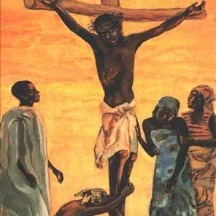There is a controversy in the ‘Christian’ community pertaining to the infamous Southern Baptist Convention expelling of a few churches from their convention for allowing women to pastor. However, this denomination was established on the premise that it was their God-given right to enslave and abuse people of color. Therefore, I personally wouldn’t put much stock in their understanding of what the Bible actually says.
For instance, many of them who disapprove have based their opinion on the following scriptures:
1st Corinthians 14:34-35, “Let your women keep silence in the churches: for it is not permitted unto them to speak; but they are commanded to be under obedience, as also saith the law. And if they will learn anything, let them ask their husbands at home: for it is a shame for women to speak in the church,” and
1 Timothy 2:11-12, “A woman should learn in quietness and full submission. I do not permit a woman to teach or to assume authority over a man; she must be quiet.”
If you were to read these scriptures verbatim, without cross-reference and study, you might draw the same conclusion, but you’d be wrong. So allow me to parse these verses for clarity, especially where the writer talks about ‘as also saith the law.’
As Yeshua was being crucified, all of the men, except for John, ran and hid, but not the women.

According to Micah 6:4, God said when He sent Moses, He also sent Aaron and Mariam. Moses as the scribe of the law, and the deliverer; Aaron as the High Priest. Mariam, their older sister, as His prophetess!!
From praising after the parting of the Red Sea to encouraging praise in front of a rock to bring forth a well, her ministry’s tenet was connected to water. The Jewish writings frame it as ‘The healing waters from Mariam’s Well.’
The Bible records that Mariam’s ministry was so powerful that when she died her well dried up.
After which, Moses thought that he could do what God had called Mariam to do, but that ended with him being denied entry into the promise land. You have to ask yourself what would’ve happened it Mariam had kept quiet, like the Southern Baptist believe women should. I could give you many instances of women in authority in both the Old and New Testaments but, for now, I’ll stick with the law in question.
In addition to the Ten Commandments, God gave Moses 613 laws that the twelve tribes of Israel (Jacob) were to live by. These laws, called, ‘The Mosaic Law,’ were put in place so that through Jacob’s descendants the world would see a reflection of God. In other words, if they obeyed His ordinances, He would bless them beyond measure, in the face of the other nations. Those blessings would cause other nations to finally acknowledge Him as The God Most High.
All 613 of these laws can be found throughout the Torah, which is the first five books of the Old Testament (Genesis, Exodus, Leviticus, Numbers, and Deuteronomy). Nowhere in any of those laws does God bar women from teaching and preaching His word. In fact, God used another Mariam (the virgin Mary) to carry and deliver His Word (Yeshua). He used a woman name Elizabeth to be the first to recognize and verbalize that Mary was carrying His son. Yeshua used the Samaritan woman at the well to announce that He had arrived. As Yeshua was being crucified, all of the men, except for John, ran and hid, but not the women.
Notice that Paul said in 1st Timothy, “I do not permit a woman to teach.” In case you don’t get it, he did not says that God did not permit it, but that he (Paul - a Pharisee) did not permit it!
After Yeshua rose, He allowed Mary Magdalene to be the first to spread the good news (The Gospel) that the grave was empty. So then one would ask how did 1 Corinthians 14:34-35 and 1 Timothy 2:11-12 come to be written in the Bible. Let me explain.
After the Israelite’s exile in 70 C.E., a portion of them (the Jews) returned to Jerusalem. At that time, although still under Rome’s bootstrap, the Pharisees, and Sadducees, established themselves as the governing party of the Jews.
These two groups took it upon themselves to set up a cultural construct in the community. So, aside from God’s 613 laws, they came up with an additional 600 civil laws. Within the frame of those manmade civil laws restrictions were put on women and girls.
Females could not learn how to read the Torah, be taught the Torah, or even go inside the Temple. The Pharisees also put a manmade law in motion that the woman had to keep her head covered, if she insist on entering the Temple to pray or prophesy. Paul even suggested that if God gave a woman a prophesy that she should tell it to her husband, and let him tell it to the congregation.
In addition, they inked a manmade civil law that the Samaritans, who were also Abraham’s descendants, could not come to the Temple to pray. In 1st Corinthians and 1st Timothy, Paul was speaking of the Pharisees and Sadducees manmade law regarding women, not God’s law.
Notice that Paul said in 1st Timothy, “I do not permit a woman to teach.” In case you don’t get it, he did not says that God did not permit it, but that he (Paul - a Pharisee) did not permit it! In 1st Corinthians when Paul said, “As also saith the law,” he is not talking about Mosaic law, but the Pharisee’s civil law)
In Joel 2:28-29, God said, “And it shall come to pass afterward, that I will pour out my spirit upon all flesh; and your sons and your daughters shall prophesy, your old men shall dream dreams, your young men shall see visions: And also upon the servants and upon the handmaids in those days will I pour out my spirit.”
So, what gives any man or denomination the right to exclude a female that has been called by God?









